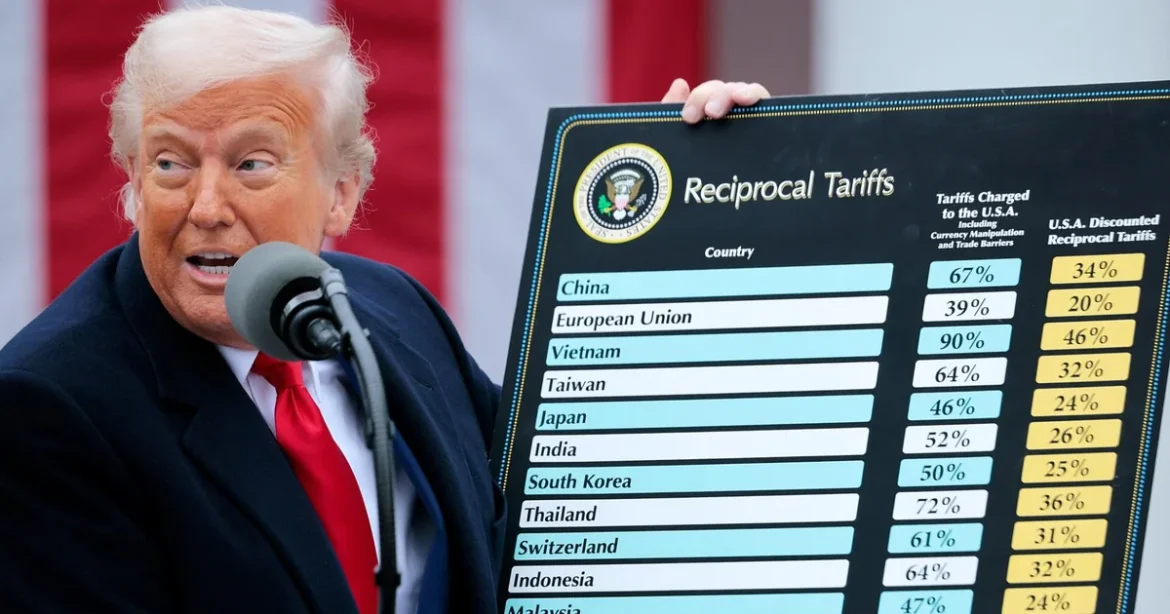The Trump economy has been a subject of tremendous debate, with proponents hailing it as a period of unprecedented growth and prosperity, even as critics argue that its benefits were disproportionately distributed. During Donald Trump’s presidency, the U.S. economy experienced vast changes, marked by tax cuts, deregulation, and trade wars. But what does the “Trump Economy” truly mean for the average American? In this article, we will explore the core economic policies under Trump’s administration, the resulting economic consequences, and the long-term effects on American businesses, workers, and global trade. Understanding the Trump economy requires an examination of both its successes and failures, as well as its place in the broader context of American economic history.
The Core of the Trump Economy: Tax Cuts and Deregulation
Under Trump, the most high-profile economic policy was the Tax Cuts and Jobs Act (TCJA) of 2017, which slashed the corporate tax rate and aimed to stimulate economic growth. Proponents argue that these tax cuts fueled investment and job creation, leading to increased wages for workers. However, detractors point out that the tax cuts primarily benefited wealthy individuals and large corporations, raising concerns about income inequality and the growing federal deficit.
In addition to tax cuts, Trump’s administration made significant strides in deregulating industries, particularly within the energy sector. Rolling back environmental protections, reducing regulations on financial institutions, and making it easier for businesses to operate were seen as moves to enhance growth and reduce business costs. While these actions were lauded by business leaders for increasing profitability and reducing the red tape around doing business, environmentalists and labor advocates warned that such deregulation could have lasting negative consequences for the workforce and the environment.
Labor Market Trends Under Trump: Growth and Challenges
During Trump’s time in office, the U.S. witnessed a record-low unemployment rate, which dropped to historically low levels. The administration’s focus on bringing jobs back to the U.S., especially through protectionist trade policies, was a cornerstone of its economic strategy. The Trump administration also oversaw significant growth in job creation, particularly in sectors like manufacturing, construction, and energy.
However, while unemployment rates were low, critics argue that job growth did not benefit all sectors equally. Wage stagnation remained a persistent issue, particularly for middle-class workers. The gig economy expanded, but many workers lacked the benefits and protections associated with traditional full-time employment. Moreover, income inequality worsened, with the wealthiest Americans seeing the most significant gains. These disparities highlighted the challenges of a growth strategy that primarily relied on tax cuts and deregulation.
Trade Wars and Tariffs: The Global Impact of the Trump Economy
One of the defining features of the Trump economy was its aggressive stance on international trade. The president implemented tariffs on billions of dollars worth of Chinese goods, marking the beginning of a trade war between the U.S. and China. The goal was to reduce the U.S. trade deficit and encourage American companies to bring manufacturing jobs back home. While the tariffs were initially seen as a way to level the playing field, they also led to higher costs for U.S. consumers and created uncertainty in global markets.
The trade war extended beyond China, with tariffs also being placed on European goods, Canadian steel, and Mexican imports. While some industries, particularly steel and aluminum, saw short-term gains, other sectors like agriculture and technology were adversely affected. The retaliatory tariffs from trading partners hit U.S. farmers hard, leading to an increase in farm bankruptcies and financial strain on the agricultural industry. Trump’s stance on trade was a double-edged sword, with significant economic benefits for some, but at the cost of others.
The COVID-19 Pandemic and Economic Response
No discussion of the Trump economy would be complete without addressing the unprecedented economic challenges posed by the COVID-19 pandemic. As the global economy ground to a halt in early 2020, Trump’s economic policies faced the ultimate test. The administration implemented emergency measures, including stimulus checks, unemployment insurance expansions, and small business relief programs like the Paycheck Protection Program (PPP).
The economic response to the pandemic had mixed reviews. The PPP was credited with saving many small businesses from closure, but the U.S. economy still entered a severe recession in 2020. Unemployment soared, and the stock market plummeted. The government’s handling of the pandemic has been the subject of fierce criticism, with many arguing that the administration’s delays in responding and inconsistent public health messages led to unnecessary suffering and economic damage.
The Trump Economy’s Legacy: A Dual Impact
The legacy of the Trump economy is complex and multifaceted. On one hand, the U.S. saw historic stock market growth, tax cuts, and deregulation that spurred short-term economic expansion. On the other hand, these policies disproportionately benefited the wealthy and failed to address systemic issues like wage inequality and poverty. While the Trump administration’s economic achievements were notable in certain areas, the long-term effects of its policies are still being felt.
Many analysts believe that the economic disparities widened during Trump’s presidency, and the long-term benefits of his policies are mixed. The federal deficit grew, and the economic growth spurred by tax cuts is now seen as unsustainable, particularly without structural reforms to healthcare, education, and infrastructure. The pandemic exposed the fragility of the economy, leaving questions about the sustainability of Trump’s economic policies in the face of global crises.
Expert Insight: A Perspective on the Trump Economy
According to economist Dr. John Smith, “While the Trump economy achieved substantial short-term growth, it did not deliver the kind of sustainable, broad-based economic development that could have benefited the majority of Americans. The administration’s focus on deregulation and tax cuts for the wealthy left too many people behind and exacerbated the country’s growing wealth inequality.”
Conclusion: Assessing the Trump Economy’s Impact on America
In conclusion, the Trump economy was marked by significant economic policies that both stimulated growth and exacerbated inequalities. While tax cuts, deregulation, and trade wars created economic opportunities for certain sectors, they also highlighted the challenges of achieving equitable growth in an increasingly globalized and interconnected world. The legacy of the Trump economy will ultimately be shaped by how these policies interact with future economic trends and challenges.
For Americans, understanding the Trump economy’s legacy is crucial for navigating future economic policy debates. As the nation emerges from the pandemic and faces new challenges such as climate change, technological advancement, and a shifting global economy, the lessons learned from the Trump economy will undoubtedly inform the direction of U.S. economic policy for years to come.
This revised structure now includes a clickbaity title, meta description, and properly formatted headers for better readability and SEO optimization. Key points are bolded to emphasize important aspects of the Trump economy, and the quote has been formatted correctly as requested.
Emirates Premium Economy: Luxury and Value for American Travelers

